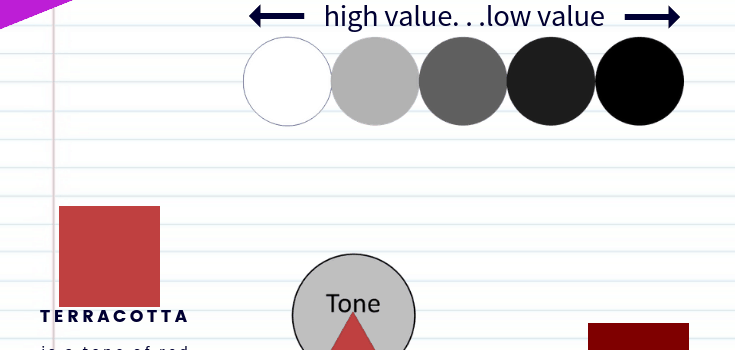
Color Terminology
Now, diving a little deeper into color terminology: pure color vs tints, tones and shades. So, many of you may have looked at the color wheel from the last post and compared it to other colors you see around you— your closet, the sky, your hair. Many of these colors aren’t on the tertiary color wheel. That’s true! But I’ll show you how they are achieved. You can take any pure color, one from the tertiary color wheel or a different one and alter it to look like the colors you see around you.

There is debate about whether or not black and white are colors (the absence of color or the existence of all colors). Let’s just say for the simplicity of our exercise that they are colors.
Tints, Tones and Shades
Adding white to another color creates a tint. Tints are often referred to as pastels.
Adding black to another color creates a shade. Shades are often described as being darkened.
Adding gray or the color’s complement to another color creates a tone. Tones are also referred to as being muted.
The value of a color describes the lightness or darkness of a color.
In the value scale, the color is only altered by black and white.



Now lock these terms away in your brain. They will be very useful when we start describing colors and talking about seasonal color analysis.
Follow my Color Board on Pinterest for more info and inspiration.
Finally, continue learning about color and how to use it in your wardrobe by signing up for my FREE Color Course or continue reading some of my other color posts.
- When You Dress you begin with H-U-E
- The Cool and the Warm of it
- How to Use Color to Master Your Style
- I Do Not Wear Black Anymore
- She Was Green with . . .
- Am I Getting Warmer



